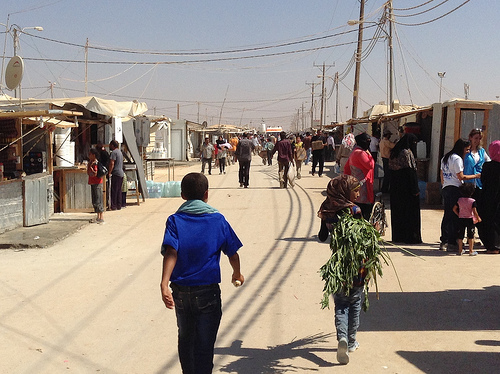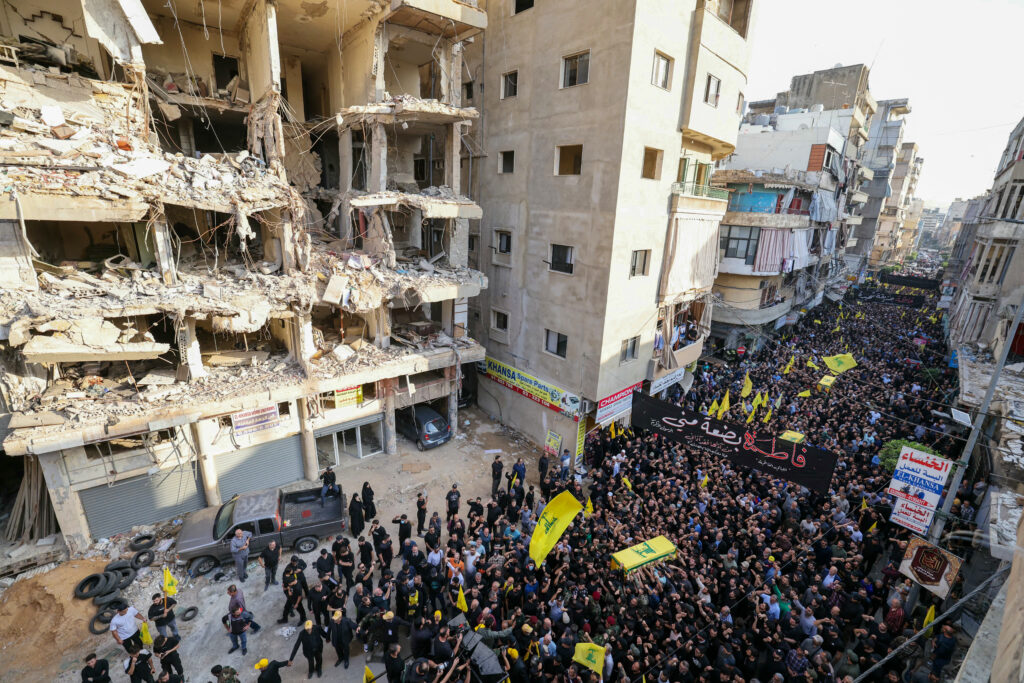Our Research Intern Muhammad Garda Ramadhito discusses the probability of the end of Jordan as a semi-rentier state due to economic stagnation and foreign aid arising from the 2011 Syrian Refugee Crisis.
The End of the Rentier State: Jordan and the Syrian Refugee Crisis
- -

Since the outbreak of the Syrian refugee crisis in 2011, foreign aid inflows into Jordan have increased and this increase might lead some to believe that the Jordanian semi-rentier state of the 1970s and the 1980s could return. In actuality, the economic stagnation from the refugee crisis and the non-governmental management of foreign aid throughout the crisis would instead hasten the end of the semi-rentier state in Jordan.
Despite the inflow of foreign aid to help Jordan with containing the Syrian refugee crisis, the economic stagnation resulting from the crisis would push Jordanian society to demand reforms from the government. From 2011 to 2016, GDP per capita in Jordan declined from US$3,578.8 to US$3,258.5 [1] and its unemployment rate increased from 12.9% to 15.3% [2] as a result of the inflow of Syrian refugees. These changes imply a decrease in standard of living in Jordan as Jordanians’ purchasing power declined throughout the period. Such a decline would lead to a widespread dissatisfaction among Jordanians. According to relative deprivation theory, this dissatisfaction is further amplified by the fact that Jordanians are an educated populace, with Jordan having one of the highest literacy rates in the Arab world at 95.9% [3]. Widespread dissatisfaction creates a huge impetus for social mobilization against economic policy, thus pressuring the Jordanian government to implement reforms.
Furthermore, how foreign aid is managed in the refugee crisis differs significantly from how it was managed in the 1970s and 1980s. International non-governmental organizations (NGOs) have a great degree of independence in allocating and distributing resources obtained from foreign aid. This contrasts with the approach of foreign aid management prior to the 1990s whereby aid was controlled by the government and distributed by way of patronage networks to consolidate authoritarian rule [4]. According to Mahmoud al-Kharouf from the Jordanian Hashemite Fund for Human Development (JOHUD), the Jordanian government does cooperate with international NGOs in certain projects involving refugees in Jordan but NGOs have a great degree of discretion in initiating and managing those projects. From my own observation of the Azraq refugee camp, the UNHCR and CARE International manage the administration of the camp and effectively governs it while the Jordanian government is only represented by the security forces guarding the camp parameters.
In effect, the independence of international NGOs in managing foreign aid acts as a check against government abuse of aid while economic decline in Jordan has the potential to push for democratic reforms. During the crisis, Amman requested the IMF for loans to help with the strained budget from the refugee crisis, introducing painful austerity measures to an already struggling economy [5]. As of now, Jordan is experiencing the largest protests since the Arab Spring [6]. Protesters want reforms but the Jordanian government is requesting its GCC allies for foreign aid [7]. It looks like Amman is returning to its playbook, for now.
References:
[1] Trading Economics. “Jordan GDP per Capita.” Trading Economics. Accessed June 06, 2018. https://tradingeconomics.com/jordan/gdp-per-capita.
[2] Knoema. “Jordan Inflation Rate, 1980-2017.” Knoema. Accessed June 06, 2018. https://knoema.com/atlas/Jordan/Inflation-rate.
[3] UNICEF. “Statistics.” UNICEF. December 27, 2013. Accessed June 06, 2018. https://www.unicef.org/infobycountry/jordan_statistics.html.
[4] Brynen, Rex. “Economic Crisis and Post-Rentier Democratization in the Arab World: The Case of Jordan.” Canadian Journal of Political Science. 25, no. 01 (March 1992): 69-98. doi:10.1017/s000842390000192x.
[5] Al-Khalidi, Suleiman. “IMF Approves $723 Million Loan to Jordan.” Reuters. August 24, 2016. Accessed June 06, 2018. https://www.reuters.com/article/us-jordan-imf-idUSKCN10Z2HN.
[6] Al Jazeera. “Jordan Protests: What You Should Know.” Al Jazeera. June 04, 2018. Accessed June 06, 2018. https://www.aljazeera.com/news/2018/06/jordan-protests-180604052840527.html.
[7] Maayeh, Suha. “UAE, Saudi Arabia and Kuwait Agree Aid Package of $2.5bn for Jordan.” The National. June 11, 2018. Accessed June 11, 2018. https://www.thenational.ae/world/mena/uae-saudi-arabia-and-kuwait-agree-aid-package-of-2-5bn-for-jordan-1.738698.







